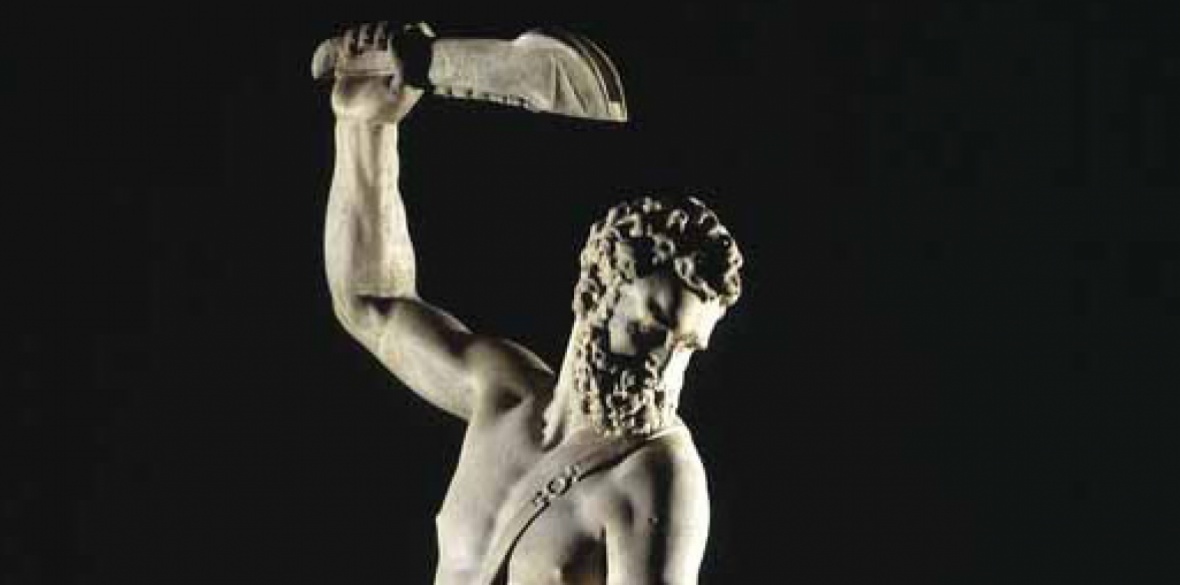This is the last article you can read this month
You can read more article this month
You can read more articles this month
Sorry your limit is up for this month
Reset on:
Please help support the Morning Star by subscribing here
GREAT leaders like to demonstrate their power. These days it tends to be shows of military might and grand parades of state-of-the-art weaponry.
But Renaissance monarchs and nobles amassed huge collections of art, the better to show off their cultural sophistication. Charles I was no exception and the current exhibition at the Royal Academy indicates the extent of his obsession with collecting the finest art and artists, one which was ultimately to cost him his head.
Walk through Charles I: King and Collector, which represents only a small fraction of the Stuart king’s entire collection, and you can see how art functioned as a political display of power and magnificence.
But behind the austere painted faces of the king and court, there is another story to be told. Reuniting works for the first time in 350 years, it captures a singular moment in British history, as an unscrupulous king created arguably the most impressive art collection in the world while ostracising his parliament and people and catapulting himself on to the scaffold.
When James I succeeded Elizabeth I to the throne in 1603, it quickly became apparent that here was a more “continental” monarch. He was descended from the Bourbons through his mother, his court spoke in French, he was determined to create a unity between his three kingdoms of Scotland, England and Ireland and to marry his children into powerful courts of Europe.
Under his rule, England was “open for business” and could now reap the rewards of the freedom of movement artists had enjoyed on the continent for generations. Over the next 40 years, the English would greet the likes of Van Dyck, Orazio, Artemesia Gentileschi and Rubens.
Art, more than merely decorative, functioned as a symbol of power and wealth, displayed at particular diplomatic events to put across messages of majesty and status. Art and diplomacy were completely inseparable at this point and James’s son Prince Charles was determined to present himself at the forefront of European power. He turned to art to project this image of majesty.
The story of Charles as collector starts with an imprudent trip to the rigid court of Spain. To Charles, he and his companion — the king’s favourite, The Duke of Buckingham — were chivalrous knights on a voyage to woo and wed a European princess.
To Buckingham, they were art collectors ready to reap the spoils of a court already housing an array of masterpieces. They took with them Buckingham’s art agent and a handful of courtiers well versed in collecting and Spanish etiquette.
The trip was costly both diplomatically and financially, but they came back with a great haul of art, gifted, bought and possibly even stolen, in the case of a sculpture of Samson Slaying a Philistine. Charles had caught the collecting bug with an acute love of Titian.
When they arrived at the Spanish court, they witnessed an unimaginable kind of majesty. The Habsburgs owned some of the most splendid art in the world — the walls were covered with works by Titian, Bosch, Correggio, Velasquez — and sumptuous tapestries woven with gold and silver thread. No-one in England had ever seen anything like this before and the experience had a profound effect on the group.
To the Spanish, his sudden arrival could only mean one thing — he may be willing to become a Catholic. In an attempt to show Charles all that Catholicism had to offer, he was given pride of place at the great festival of Corpus Christi. It was a feast for the eyes. The streets were lined with great tapestries and he saw how Philip IV was revered by his people, almost as a deity. Though he had no thoughts of conversion, Charles saw the tempting reality of a king treated almost as a god, with an art collection to rival any other in existence.
We can see from paintings of the prince upon his return that he took on Spanish fashion and a new kind of majesty was implemented.
As well as falling in love with art and ceremony, Charles was immediately besotted with his potential bride and accounts describe his constant impatience to see her — on one occasion even breaking into her garden only to be met with shrieks of terror from the virtuous princess. This is clearly not the way a prince was expected to behave and, if a union had ever been possible, his ideas of diplomacy drew an end to it.
As possibilities for a marriage dwindled into oblivion, the Stuart courtiers scavenged what they could get their hands on and the trip turned into little more than an art collectors’ holiday.
This visit was financially ruinous. James wrote to his son begging him to come home, telling him that the royal purse was empty. Vast sums of money were spent on elaborate clothing, jewels and art, as well as an elephant and camels.
When they returned home, Charles and Buckingham were determined on war with Spain and the latter took an invading fleet to Cadiz in 1625. It was another complete fiasco and the cost was immeasurable, both in terms of money and loss of lives, without making a dent in the Spanish army.
The trip to Spain was a definitive moment for Charles — a diplomatic and financial disaster and the first of many ill-judged moves that would come to characterise his reign. He returned to England determined to be the most prominent king in Europe, a great collector, almost divine and, above all, indisputably powerful.
He would continue to spend vast amounts of money on art, clothes and court entertainments. He would ostracise an already distant parliament and, within four years of becoming king, engage in an 11-year personal rule under which he would impose unpopular and barely legal taxes on his people.
His immovability on matters of state and religion would embroil his three kingdoms in a civil war that would last a decade and he would maintain his divine right to rule until parliament had no choice but to condemn him for treason.
On January 30 1649, Charles was walked from St James Palace to the Banqueting House in Whitehall where, sat under the extraordinary ceiling painting by Rubens depicting his father in divine glory, he would settle his affairs before being led onto a purpose-built scaffold and beheaded.
Oliver Cromwell became Lord Protector and under him the crown jewels were melted down and the gems sold, along with the majority of this enormous art collection, a necessary move to recoup some of the money lost under decades of decadent monarchs.
What we see in the exhibition is around 7 per cent of the original collection and, walking through, it is easy to see how the king lost his head.
This is an edited version of an article by Breeze Barrington, PhD Candidate in Early Modern Tapestry, Queen Mary University of London, which first appeared in The Conversation, the conversation.com. Charles I: King and Collector runs at the Royal Academy in London until April 15, details: royalacademy.org.uk









